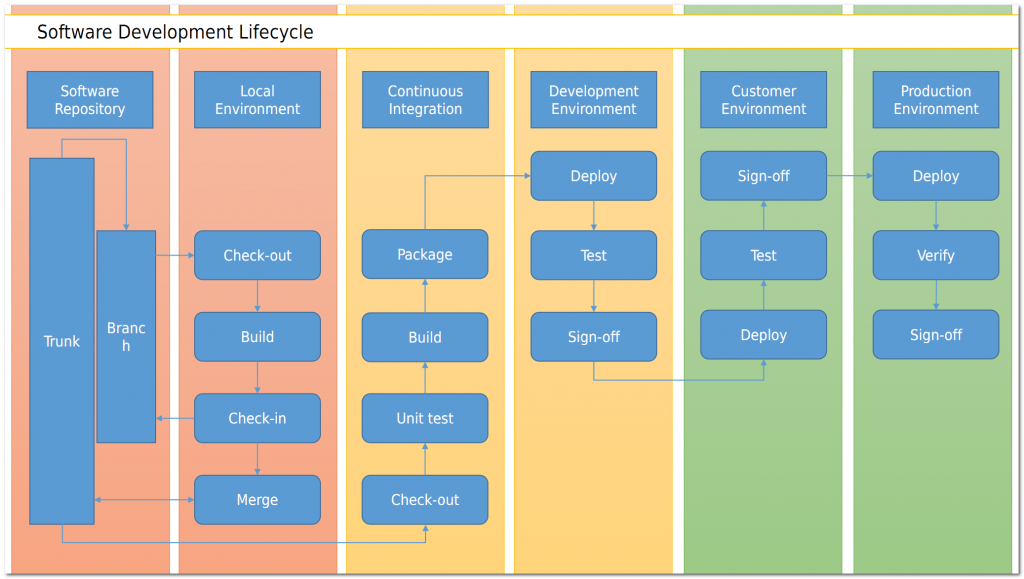Software Development Life-cycle (SDLC) is one of the most well-defined processes within the company which applies to all software, including TaskBeat. The process defines six stages that each release is going through to ensure the quality standards are met. The quality of our software depends heavily and equally on two factors: adoption and execution of this process.

Adoption: means no short-circuiting of this process, except urgent production fixes, typically no more than few to several each year. All developers must apply the SDLC process to all changes respectively of the nature of their change. That includes software, graphics, database and currently excludes data patches due to their infrequency. Most importantly the left to right order of execution must be maintained, meaning no developer can post a change on a test server in the middle of a process just to fix an odd error, without undergoing the full version management part of the process on the left-hand side first.
Execution: means that each step of the process is executed fully. Something historically we’ve been lacking at times and many places do. Execution means that no step should be executed poorly just because the outcome seems to be known. In most rigorous scenario each trivial change requires diligent testing, no matter the perceived low impact on quality of the product. This means that efficiency of the process depends heavily on planning. Therefore changes are packaged, tested and deployed in bi-weekly, meaningful change-sets and aligned with resources to meet the release plan.

Comments are closed.